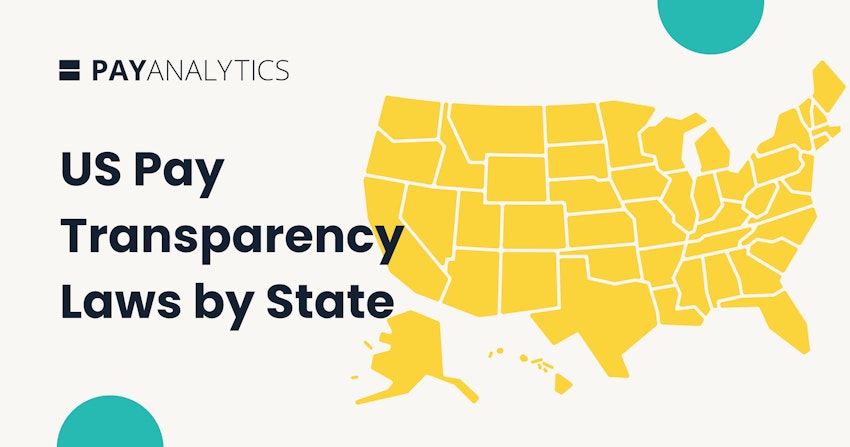
In recent years, the structural and legal challenges of pay equity have mounted; the prevailing mindset that pay decisions are private and at-manager-discretion has given way to a more objective and transparent approach based on hard data. This realignment in perspective has touched—and will continue to touch—every part of your organization, and has led to increasing interest in pay policy and equity at the board level.
A concrete, methodic compensation strategy that supports pay equity is an indispensable pillar for, and a key interest of the upper levels of, your organization, including the board of directors (and a subset of directors called the compensation committee).
As a compensation leader, you’re in an excellent position to articulate the depth of your pay equity journey. Your core task as a communicator is to package complex information in the right wrapping for the board and/or compensation committee; that includes your methodological approach and your challenges, as well as the wins you’ve realized along the way and the path forward. Doing so in a way that is realistic about priorities, time, and scale is paramount.
There are several core steps you can take to ensure you’re speaking the same language as your board and kickstarting a valuable, long-term conversation about your pay equity practices. Read on to learn what the board needs to know and how to inform them about your pay equity analysis, initiatives, and goals.
But first, a little backgrounder (or skip straight to your board's key pay equity questions).
Backgrounder: ESG concerns of the board of directors
As Environmental, Social, and Governance (ESG) policies, regulations, and requirements become increasingly common, employers are now pivoting their focus toward compliance as the bare minimum. Organizations themselves are expected to embrace ESG goals and to take action and to communicate their targets, initiatives, and progress to the larger world. This encompasses diversity, equity, and inclusion (DE&I), of which pay equity is a central part.
By the same token, your board of directors is tasked with safeguarding the company’s future and fulfilling regulatory requirements. Pay equity has not always been on your board’s agenda, but as their charter has expanded to include broader ESG topics, their interest has grown to include talent strategy and human capital management. As a result of the board’s now-expanded remit, pay equity studies are more frequently presented to them and, in turn, discussed at the board level.
How to communicate strategic pay equity plans to the board
Each member of the board brings their area of expertise to the table. These specializations can encompass risk management, human resources, total rewards, law, and finance. Members of the board (and therefore the compensation committee) may not have DE&I expertise, but pay equity has inextricably entered their agenda.
Though not without exception, most boards will appreciate the importance of evolving regulation around pay transparency and pay equity, and will be incentivized to avoid reputational damage and litigation. In some instances, the board’s interest extends beyond the basics, signifying a desire to focus on how pay equity is incorporated into your organization-wide compensation decision-making processes.
Your first task is to equip the board with the foundational knowledge they need to make informed judgements about the value of the company’s strategic pay equity initiatives, and the state of pay equity at your organization in particular. Some compensation committee members, too, may only be familiar with the “unadjusted pay gap” (for a refresher, read our article on the unadjusted vs. adjusted pay gap). You may need to draw the distinction between these two pay gaps in brief and in layman’s terms, conveying nuance without overwhelming. Keep in mind that your presentation to the compensation committee and/or the board will likely contribute to discussions with other committees, consultants, and shareholders, so clarity and concision are key.
To prepare for this conversation, ask yourself:
- What is the baseline knowledge of pay equity in the room?
- Have they accepted the relevance of pay equity, or can you expect friction?
- Have they seen a pay equity study before? In other words, is this your first time introducing the topic, or have you been working on this for some time?
After framing the pay equity discussion as described above, you can move on to the state of pay equity at your organization, current insights and results, and your vision for the future.
How to communicate the essence of a pay equity project


First, you’ll introduce your methodological approach—what was measured and how. From the outset, be sure to state any employee exclusions and make absolutely clear what manner of compensation—base pay or total compensation—was analyzed. Laying this information out upfront is essential because it enables your audience to understand the results in their right context.
To be clear about your methodological approach, make sure to answer:
- Were both the unadjusted and the adjusted pay gap measured?
- What were the results at an organizational level?
- What were the results by subsidiary, department, and other subdivisions significant to your organization?
Consider reporting on both pay gaps. The adjusted pay gap may be a more relevant measure of pay equity, but the unadjusted pay gap speaks to overall diversity at your organization; where possible, speak of both without allowing the unadjusted pay gap to overshadow or crowd out the importance of the adjusted pay gap.
Aim to communicate what these results mean, and what drives them (for example, a lack of managerial representation can explain a large unadjusted gap, while trouble spots are often of interest to organizations that measure an adjusted pay gap). In other words, be prepared to speak about the root causes you’ve identified as a result of your analysis. You might, for example, find a gender/racial imbalance in leadership roles, or those salaries might be incommensurate with “valid” objective factors.
"Valid factors" include level of responsibility, education, experience, and so forth that your company accounts for in its pay philosophy; race, age, ability, gender identity, number of children, etc., are not “valid” determinants of pay.
If this is not the first time you’ve run a pay equity analysis, compare and contrast the results with previous analysis, and highlight any advancements that you’ve made in terms of your methodology.
Finally, make sure that you’re prepared with deeper-dive information that will equip you to answer the tough questions, but keep those answers in reserve rather than in your main presentation. This information might include:
- The impact of key pay drivers
- How well your pay equity models explain pay
Pay equity amongst new hires vs. established employees
How to communicate the path forward
In this step, you’ll need to communicate both your immediate goals and your ongoing and longer-term goals (how you’ll ensure pay equity going forward).
Your immediate goals might answer questions related to whether—and to what extent—remediation action is needed; this part will likely include elaborating on the amount of budget you’ve either already dedicated or will need to request. Your approach to closing your pay gaps will vary based on your organization’s unique situation and pay equity ambitions. Pay and workplace equity tools can help you to determine the steps you’ll need to take and how to communicate them, backed by hard data.
Finally, prepare to speak to how your results are likely to evolve overtime, and to paint a picture of how your pay equity journey may unfold. Here, think in terms of intervals: What will your results look like in one year, three years, and five years, or longer? This is an opportunity to offer context and insights into the scale and time needed to accomplish your goals.
Are you ready to answer your board’s questions?
In the first few years of pay equity analysis projects, boards may ask a range of general and specific questions. Do you have your answers ready?
- What is your company’s definition of pay equity?
- What objective do you want to set for pay equity, and how will you track progress?
- What is your pay gap today?
- What will it cost to reach your pay equity goals, and how long will it take to reach them?
- How frequently are you analyzing pay equity? Is the analysis done internally or by a third party?
- What method is your company using when analyzing pay equity?
- How does your company make sure that pay equity is being evaluated fairly? What factors (such as job position and seniority) are taken into account?
- What are your peers doing, and what are their results?
- What market or regulatory requirements apply to you?
- Why is there a pay equity gap (root causes)?
- What is your long-term philosophy for ensuring pay gaps do not reappear?
After your pay equity project has matured, your focus will shift to continuously improving your processes, methodologies, and refining your philosophy. Questions include:
- How do your results compare to prior years?
- What factors are driving the change (either positive or negative)?
- Have you set realistic, but ambitious, goals?
- Do you want to disclose the pay gap? If so, do you disclose the unadjusted, adjusted, or both? Do you communicate externally or internally only?
- Does your company offer managers and HR staff training on pay fairness and unconscious bias?
- Are employees given clear and understandable explanations of their pay and pay structure and the methods used to establish them?
- How does your company make sure that its pay policies comply with applicable pay equality rules and regulations?
Parting thoughts
Remember: Educating your board and bringing them into a longer-term conversation about your pay equity efforts takes time, especially since the makeup of your board may change. Your perseverance and precision will ease reporting as your initiatives take root and grow.
When you approach the board, it’s critical to convey the reality that even if you have achieved a 0% adjusted pay gap, true pay equity is not a one-and-done exercise. It’s an ongoing commitment to stakeholders and, in some sense, a shift in culture and mindset. Your goals and ambitions will evolve over time—from closing adjusted pay gaps to addressing unadjusted ones; from ensuring regulatory compliance in hiring practices to building equitable inclusive workplaces.
Be prepared for board-level pay equity conversations with the support of PayAnalytics
To learn more about how PayAnalytics can help you conduct a pay equity analysis at your company for top-notch reporting to your board and beyond, book 30 minutes with one of our pay equity specialists. We regularly work with clients who are facing pressure to report to the board, and are happy to answer your most pressing questions, as well as provide educational and practical resources to support you.





